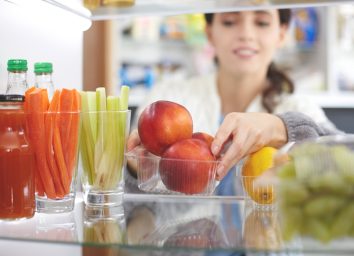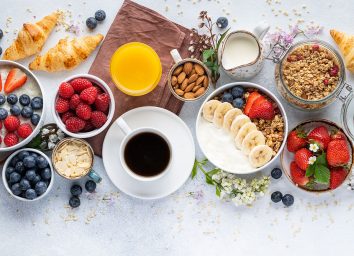The Healthiest Diet Habits for a Flat Belly
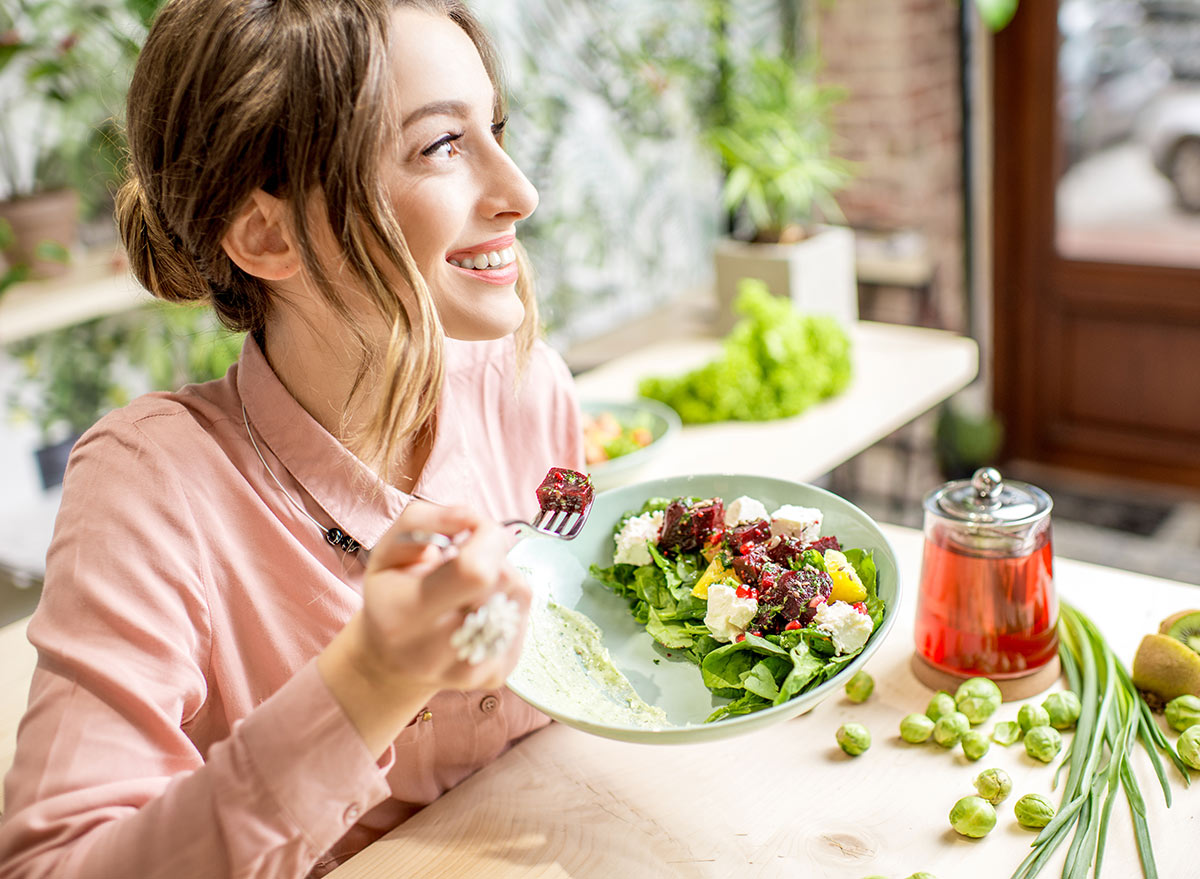
Feeling groggy and run down lately? Hoping to trim your waistline and feel your best? Time-and-time again, we are told by numerous healthy experts that the best way to achieve any health goal is by setting healthy diet habits.
According to the National Institute of Health, creating healthy habits for your life can result in successfully achieving health in whatever form you are looking for—whether that is to lose a few pounds, get a flat belly, or simply feel your absolute best in the skin that you’re in. This is why we decided to point out some of the healthiest diet habits you can follow that will help you reach the goals you have set.
In order to determine the healthiest diet habits, we spoke with Rachel Paul, PhD, RD from CollegeNutritionist.com, about what you can do on a daily basis to get that flat belly you’ve always wanted. Here are some of her tips, and for more healthy eating tips, be sure to check out our list of 15 Underrated Weight Loss Tips That Actually Work.
Stock up on your favorite healthy foods.
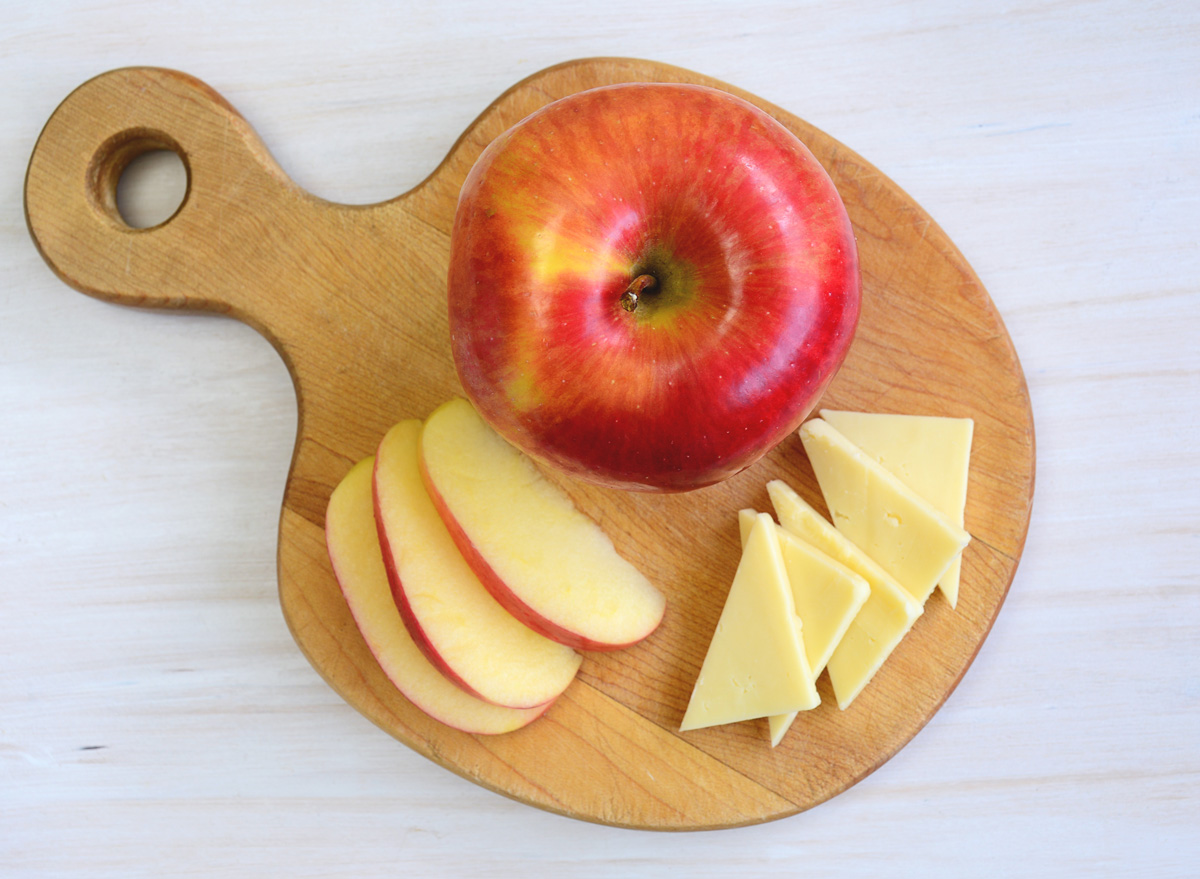
It’s a lot easier to eat healthy when you’re stocked with your favorite healthy foods, right? If you’re looking to eat more fruits and vegetables, buy the ones that you like. Enjoy having an apple with a spoonful of peanut butter to dip? Stock up! Are you a fan of bell peppers? Slice them up for an easy vegetable on the side with your dinner.
Plus, stock up your pantry and fridge with all the healthy snacks or frozen foods you like as well. There are even tons of healthy frozen dinners for those moments you’re in a time crunch and you need a meal, or even these healthy breakfast items you can buy!
Drink enough water.

You probably hear from a lot of health experts that drinking enough water throughout the day is important. But why? Not only does drinking water give you body energy for the day, but it can also help with fullness and overeating. One study published by Clinical Nutrition Research shows that drinking water before consuming a meal can actually help you to eat less during your meal by creating a sensation of fullness. So if you’re drinking water throughout the day, especially before your meals, you’re likely to not eat as much when you sit down for a meal.
Here’s How to Make Sure You’re Drinking Enough Water.
Make a plan.
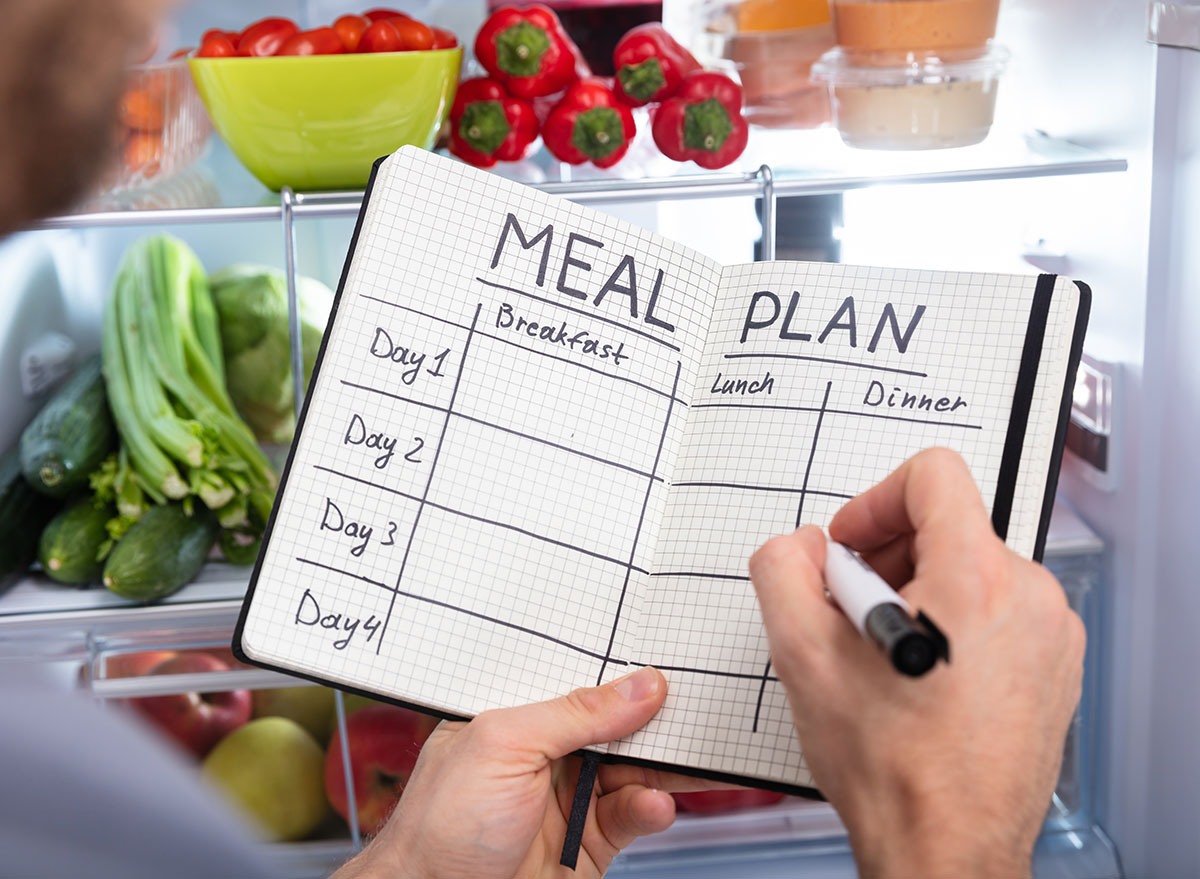
It may seem tedious to set a meal plan for your week, but think about it. How many times have you felt super hungry and ready to eat something, only to find out you have nothing nutritious to eat? You’ll likely reach for something that seems easy—chips, cereal, or anything else you easily have on hand. So what if eating healthy was just as easy?
Stocking up your fridge and pantry with healthy foods can help with those times you’re feeling hungry, but having a plan is also incredibly helpful. If you have a healthy snack ready to go when you need something, you’ll be a lot more likely to eat it because it’s ready for you.
The same goes for cooking meals! If you have a delicious meal ready to cook—like one of these 100 Easiest Recipes You Can Make—you’re more likely to cook it and eat healthy than trying to think of something on the fly.
Don’t have “cheat” meals. Enjoy your food.
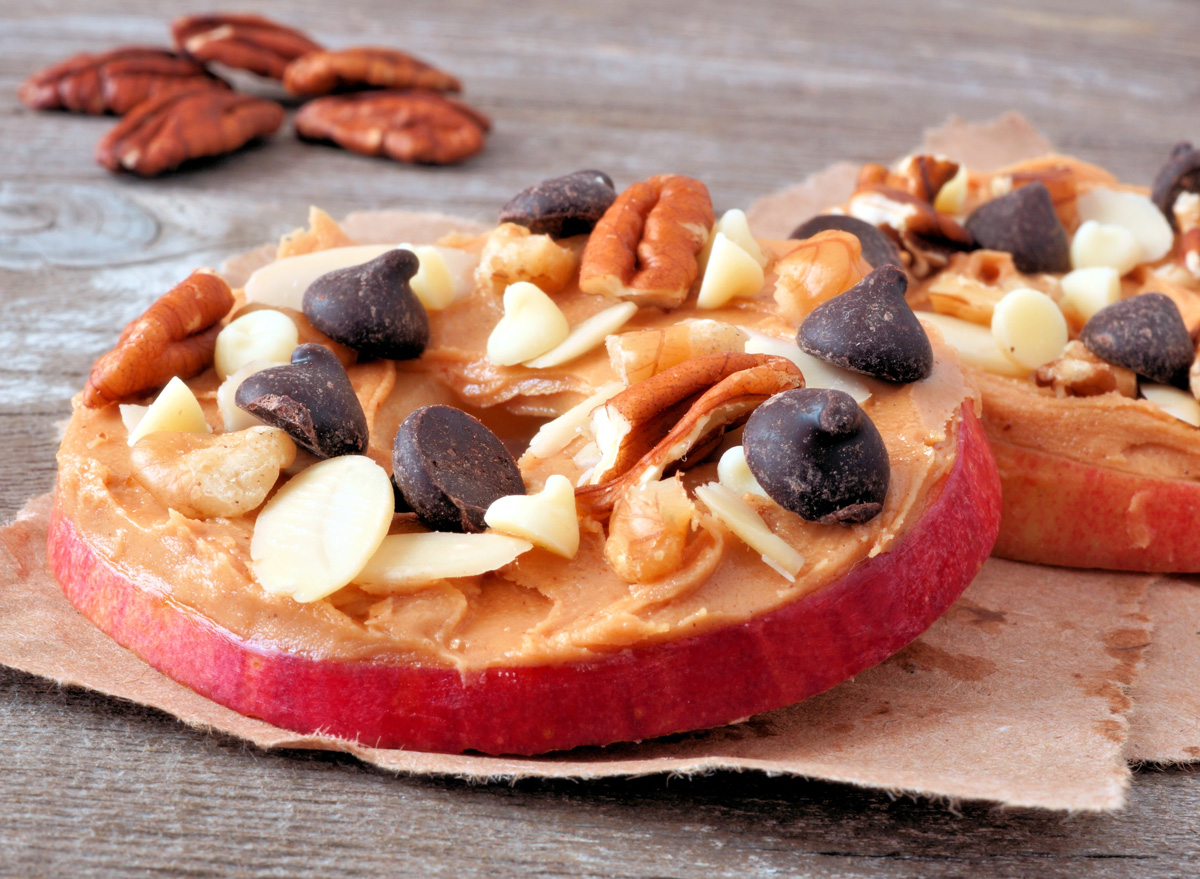
You’ve probably heard health or fitness gurus tell you the benefits of having a “cheat meal.” While it’s tempting to pig out on all your favorite foods once in a blue moon, Paul says to avoid it completely. And no, that does not mean avoiding your favorite foods altogether. In fact, she believes it is best to incorporate your favorite foods into your meals—including your sweet treats.
“Instead of ‘cheat meats’ (I don’t like the connotation of ‘cheating’), include your favorite foods in your meal plan every day,” says Paul. “If you love chocolate, have a single-serving amount after dinner.”
Restriction has never worked well for extreme diets, so instead of not allowing yourself to have a food you love, incorporate it into your meals. Like chocolate chips on top of apple slices. Or french fries with a big chicken salad.
Be realistic with what you can handle.
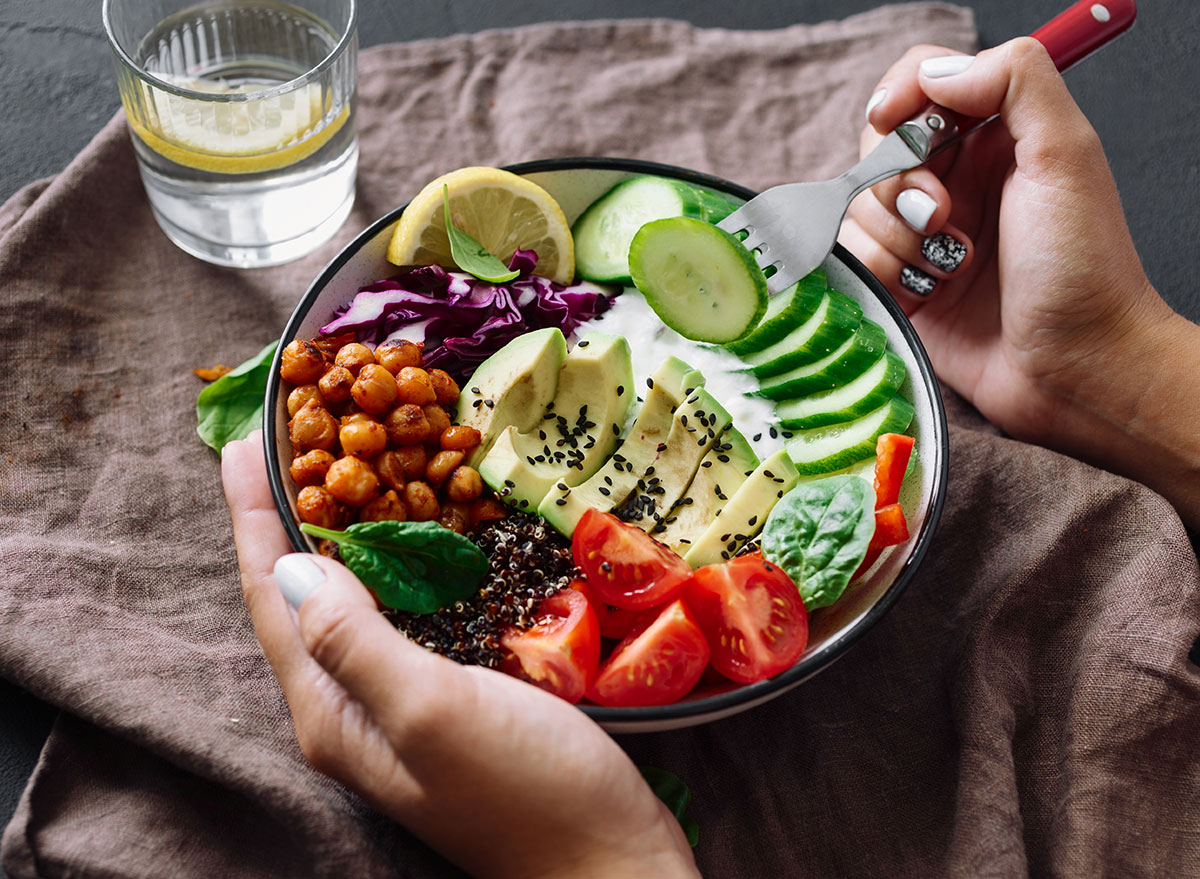
Remember, creating healthy diet habits for a flat belly will take time. You don’t have to be perfect at it overnight! Let it be a process—give yourself the time and the space to learn about nutrition and eating good foods.
Paul says the best way to do this is to set realistic goals for yourself as you start your healthy journey. Don’t go from zero to 60 in one day—take small, attainable steps that you feel like you can actually handle.
“Be realistic with what you can do for the long term,” says Paul. “Don’t start a super intense exercise routine if you know you won’t be able to keep it up. My rule of thumb is to only add a new habit or task that you’re willing to do forever.”
A few great realistic health goals you can start with could include eating a fruit or vegetable with every meal, moving for 30 minutes every day (walking is great!), or even making sure you’re drinking enough water. Start small, and work your way up from there.
Eat when you’re hungry.
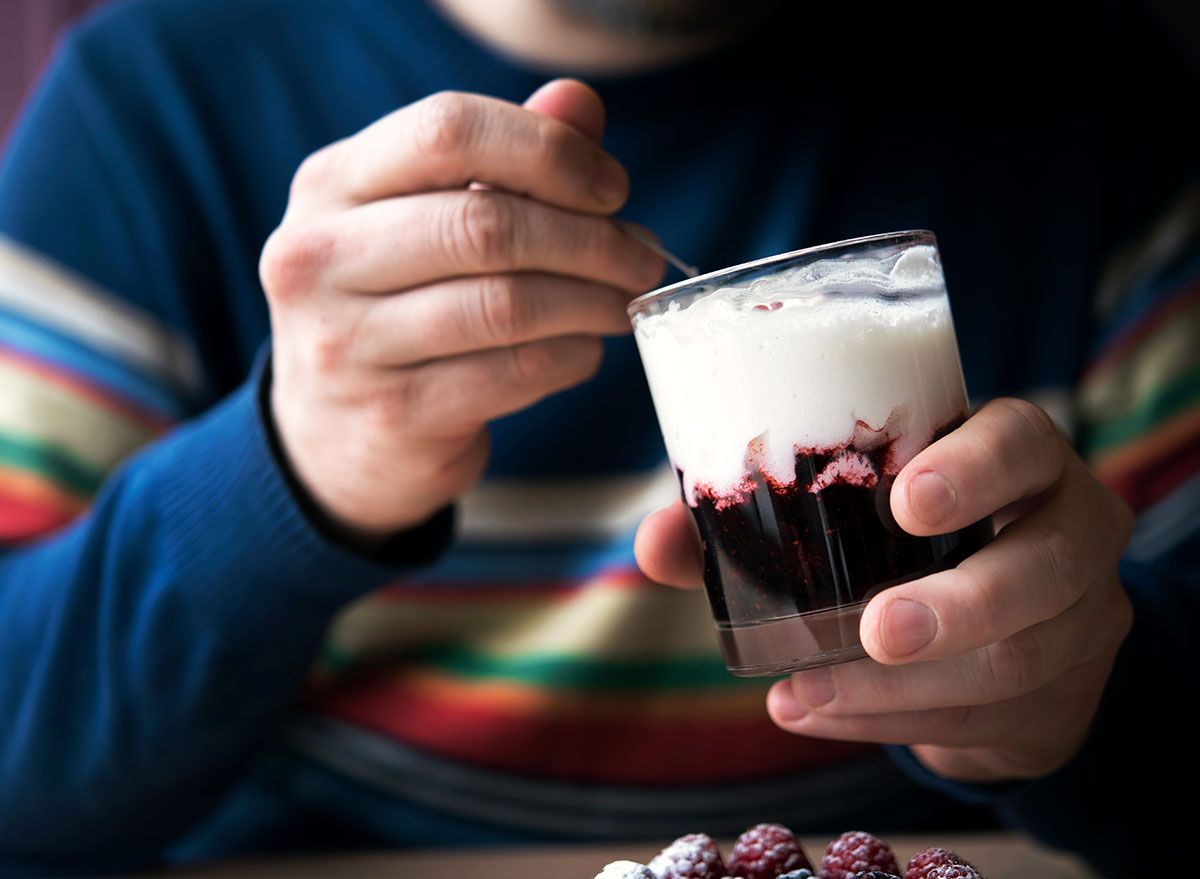
Not hungry during breakfast time? It’s okay. You don’t have to force yourself to eat a meal simply because the rest of the world says it’s “time to eat.” Instead, eat when you feel your body is hungry for a meal.
Paul recommends asking yourself the following question: Are you actually hungry?
“Go by how your body is feeling,” she says.
So if your body is hungry for a meal, grab that healthy meal you planned on having! But if you’re not hungry, it’s okay to wait until you are.
Aim for 2 cups of non-starchy vegetables.
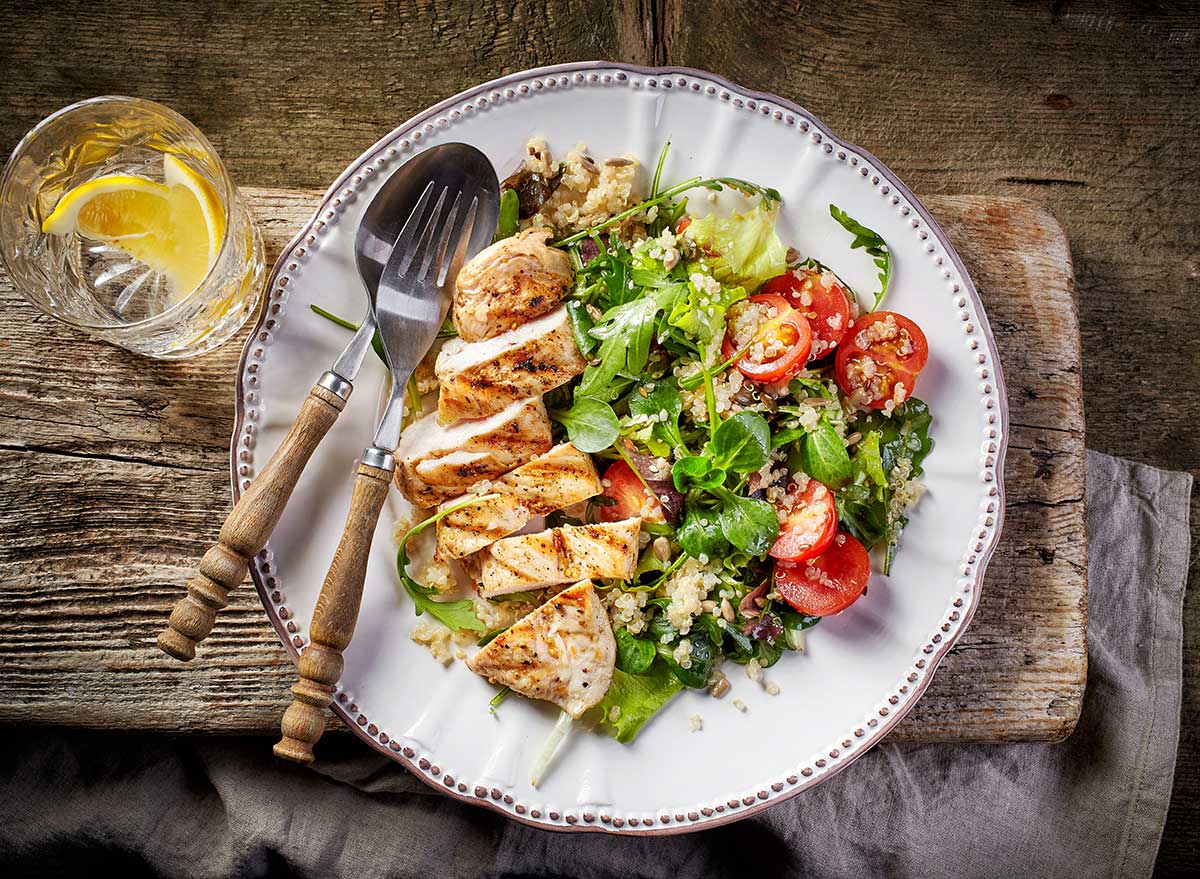
An easy mantra to live by? Try this next time you’re setting your plate.
“Try to eat 2 cups of non-starchy vegetables at lunch and dinner,” says Paul. “One cup is about the size of your fist. So try to get 2 fist fulls.”
Simple, right? You’ll be shocked to learn that two cups of vegetables will fill up half of your plate most of the time, which closely follows the MyPlate Dietary Guidelines recommended by the USDA. Filling your plate up with two non-starchy vegetables for lunch and dinner is easy to remember, and will help with your fullness after your meal.
For even more healthy diet habits that help with a flat belly, check out our list of the Best Ever Weight Loss Habits.
